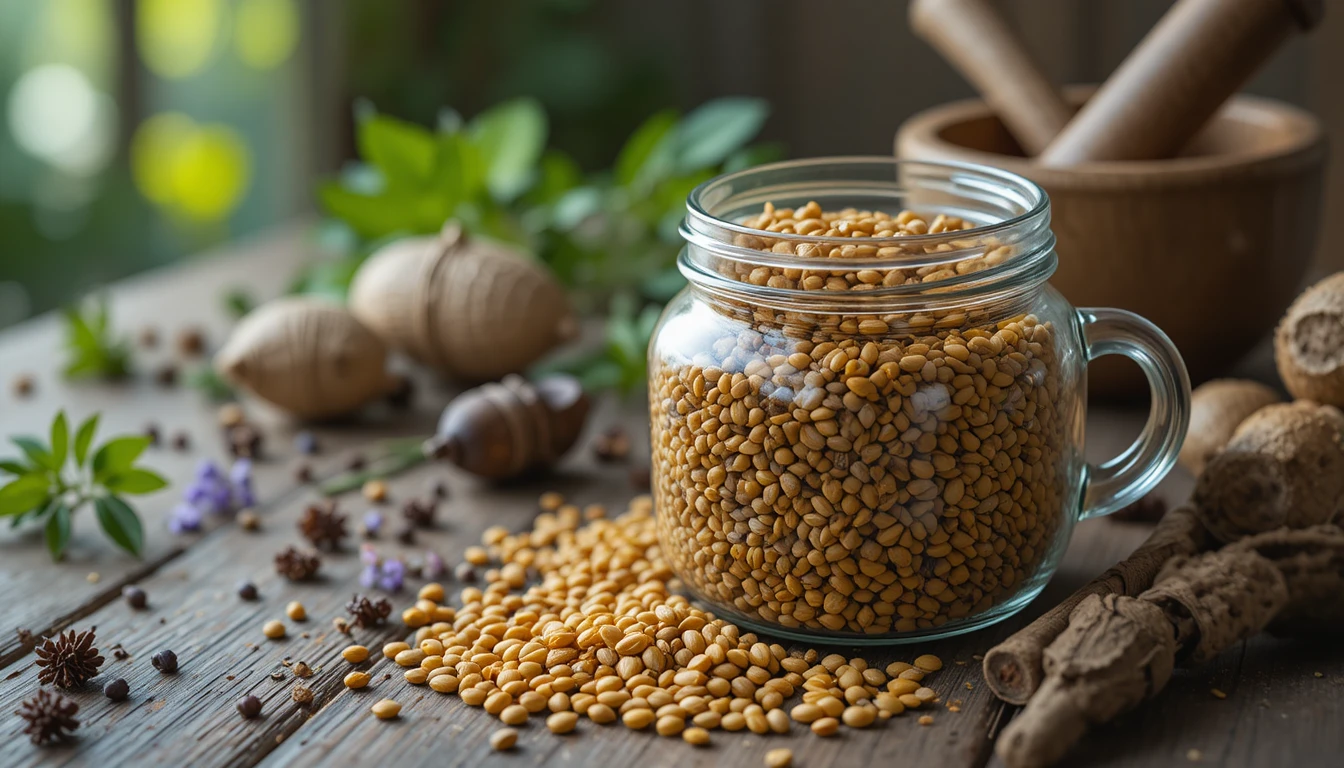Foenegriek—fenegriek, fenugreek, no matter which spelling your grandmother swears by—has a way of sneaking into your life. One moment you’re staring at a bag of foenegriek poeder, wondering why it smells like burnt maple syrup, and the next you’re adding it to everything from curry to paardenvoer because you suddenly get why people have been obsessed with it for a few thousand years. It’s a loud herb. Not the polite type. And honestly, that’s why it works.
What Foenegriek Actually Is
Foenegriek comes from Trigonella foenum-graecum, a small plant with tough, yellow-brown foenegriek zaden that look harmless until you toast them and the whole kitchen starts smelling like someone dropped caramel on hot metal. The seeds are the classic version, but most people go for foenegriek poeder—it mixes easier, and you don’t have to grind anything. It’s bitter, nutty, warm, a little weird in the best way. That’s the charm.
Where This Herb Actually Comes From
Foenegriek didn’t just appear in Dutch spice drawers out of nowhere. It’s been wandering around the Mediterranean, India, and the Middle East long before supermarkets existed. People used it in Ayurveda, in old remedies, and in those ancient “my mom said this helps, so just drink it” tonics. The herb traveled because cooks grabbed it, healers trusted it, and farmers fed it to animals. Hard to argue with that kind of résumé.
Nutritional Stuff People Pretend They Understand
Here’s the thing about foenegriek: it’s loaded. Vitamins A, B, C, E. Minerals like ijzer, fosfor, magnesium. A pile of vezels. Enough plant compounds—saponinen, flavonoïden, diosgenine—to make nutrition bloggers lose their minds. You don’t need a biochemistry degree to appreciate it. Just know the seeds aren’t “empty flavor.” They actually do things.
What Foenegriek Does for Humans
You’ll see a lot of hype online. Some of it true, some of it… ambitious. Foenegriek can help with spijsvertering, especially if your system gets cranky after heavy meals. Some people use it for bloedsuiker balans. Others swear their cholesterol improved. Then you’ve got the lactatie crowd—yes, foenegriek wordt gebruikt om melkproductie te ondersteunen. People argue about how strong the effect is, but the use has deep roots.
Does it fix everything? No. Herbs don’t work like magic. But it does enough to keep people reaching for it.
Foenegriek for Paarden (Yes, It’s a Thing)
Let’s not pretend this part isn’t huge in the Dutch market. Horse owners love foenegriek voor paarden. Absolutely love it. It shows up in paardenvoer, supplement buckets, and those giant bags from Agradi and PharmaHorse.
Why?
Because it hits multiple problems at once:
-
ondersteunt luchtwegen
-
helpt de spijsvertering
-
geeft eetlust een zetje
-
maakt de vacht glanzender
-
werkt soms als melkgift-boost voor merries
And since companies brag about “human grade foenegriek poeder,” people feel better giving it to their animals. Dosering? Usually a maatschepje or two depending on gewicht, maar eigenaren kennen hun dieren—ze weten wanneer iets werkt.
Cooking With Foenegriek Without Ruining Dinner
Foenegriek poeder is the easy route. You grab a spoon, toss it into curry, soep, marinade—klaar. But foenegriek zaad is a little wild. You need to roast the seeds lightly, otherwise the bitterness bites too hard. After roasting, the taste softens into something nuttier and surprisingly warm.
Where it shines:
-
curry’s
-
butter chicken
-
linzensoep
-
groenteschotels
-
marinades met komijn, koriander, kurkuma
Even een simpele pan rijst wordt ineens interessanter met een snufje foenegriek erin. The trick? Don’t dump too much. This herb doesn’t whisper.
Creative Uses People Don’t Talk About Enough
Here’s where things get fun.
Foenegriek thee:
Steep crushed seeds in heet water and you get a warm, slightly bitter tea people drink for digestion.
Foenegriek spruiten:
Tiny sprouts with a mild kick. Easy to grow, surprisingly tasty on broodjes.
Foenegriek voor huid & haar:
Some people make a paste or oil infusion. Does it smell weird? Yes. Does it sometimes help? Also yes.
In brood & marinades:
Try a pinch in bread dough. You’ll get flavor that doesn’t taste like anything else.
Choosing the Right Form of Foenegriek
If you’re cooking, both poeder and zaad work—poeder blends faster, zaden give more control. If you’re taking it for health stuff, poeder or capsules make the most sense. For paarden, everyone uses poeder because mixing seeds into voer is a circus act.
Good quality foenegriek:
-
ruikt sterk
-
heeft warme kleur
-
smaakt bitter maar niet muf
-
is meestal biologisch of minimaal 100% natuurlijk
Stale foenegriek is useless. If the scent is weak, you basically bought dusty air.
Safety, Side Effects, and When to Chill Out
Foenegriek is safe for most people, but not for everyone. Some mensen krijgen wat buikrommel of een rare geur aan hun zweet (ja, dat gebeurt—de maple-syrup vibe gaat soms mee naar je huid).
Minder grappig:
Zwangere vrouwen moeten voorzichtig zijn. Foenegriek kan de baarmoeder prikkelen.
Medicatie-interacties bestaan ook, vooral bij mensen met bloedsuiker-medicatie. Als je twijfelt? Vraag je huisarts. Niet Google.
Voor paarden geldt hetzelfde simpele idee: begin rustig, kijk hoe je dier reageert.
Buying Foenegriek Without Getting Ripped Off
Nederland zit vol shops die foenegriek verkopen:
-
kruidenwinkels
-
supplement sites
-
dierenwebshops
-
natuurwinkels
Grote verpakkingen (1kg, 2.5kg) zijn goedkoper per kilo. Kleine zakjes zijn handig als je gewoon wilt testen. Let op geur en kleur. Foenegriek zonder geur is net alsof je kruiden koopt bij iemand die zelf niet kookt.
FAQ — Quick Fire Answers
Is foenegriek hetzelfde als fenugreek?
Ja.
Zaad of poeder?
Poeder voor gemak. Zaad voor controle en betere smaak.
Hoeveel per dag?
Meestal 1–3 gram voor mensen. Paarden? Een maatschepje afhankelijk van gewicht.
Helpt het echt bij luchtwegen?
Voor paarden? Vaak wel. Voor mensen? Verschilt per persoon.
Smaakt het echt bitter?
Ja. Dat is juist de charme.
